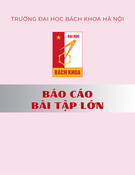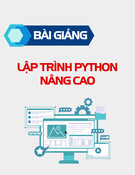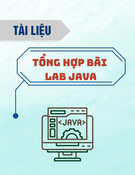
C
Platform-Specific Event Handling
In this appendix:
• The Results
• Test Program
My life with Java began in September of 1995. I started on a Sun Sparc20 and have
since used Java on Windows 95, Windows NT (3.51/4.0), a PowerMac, and an early
version of a Java terminal. At the time I started using Java, it was in its alpha 3
release. Even before the beta release, the Internet crowd was hailing Java as the
programming language for the next millennium, and people were lining up to
take Sun’s Java training classes.
Although Java has many important features, probably the most important is plat-
form independence: you can compile a program once and run it anywhere. At
least, that was the goal; and Java came impressively close to meeting that goal.
However, there are some problems, particularly in the area of event handling. Java
programs just do not act the same, from platform to platform, environment to
environment. Even if you stay within Sun’s Java Developer’s Kit, you cannot take a
program created on one platform, move it to another, and be guaranteed that it
will react the same way to the user’s interactions. To make matters worse, Netscape,
the makers of the first run-time environment for beta API applets, Netscape,
decided to take matters into its own hands with Navigator version 3.0; its version of
AWT behaves slightly differently than the JDK’s. On top of that, Navigator itself dif-
fers from platform to platform. Version 1.1 of the JDK introduces more idiosyn-
crasies, even as it resolves some others.
With more Java environments available, HotJava, Internet Explorer, and Java termi-
nals to name a few, and new official extensions to AWT coming out, the differences
are expanding, instead of contracting. Hopefully, there will be a day when this
appendix can go away, completely. Until that time, I’ve tried to document the
behavior of different run-time systems, on different platforms. If the platform is
1003

1004 APPENDIX C: PLATFORM-SPECIFIC EVENT HANDLING
not included in this appendix, the source for a test program is. If you run the pro-
gram on your platform and send the results to me at jaz@ora.com, they will be
included in a future printing or provided online. The test program requires user-
interaction, so please follow directions carefully. Between printings, the book’s
Web site will maintain the latest information at http://www.ora.com/cata-
log/javawt/. Only the results from using the latest releases of each platform are
included in Table C-1.
C.1 The Results
Table C-1 shows the events delivered to each component on the major platforms in
Java 1.0. An ✓in a particular entry means that the event is passed to Java from the
component’s peer; a dash means it is not.
Table C–1: Component Events in Java 1.0
Component/Events vs. NN3.0 NN3.0 NN3.0 SDK JDK JDK JDK IE3.0 HJ HJ
Run-time/Platform NT/ Mac Sun NT/ NT/ Mac Sun NT/ NT/ Sun
Win95 Win95 Win95 Win95 Win95
Button
KEY_PRESS ✓—✓✓✓—✓✓✓✓
KEY_RELEASE ✓—✓✓✓—✓✓✓✓
KEY_ACTION ✓——✓✓—✓✓✓✓
KEY_ACTION_RELEASE ✓——✓✓—✓✓✓✓
MOUSE_DOWN ✓———— ————
MOUSE_UP ✓✓——— ————
MOUSE_MOVE ✓✓———✓————
MOUSE_ENTER ✓✓———✓————
MOUSE_EXIT ✓✓———✓————
MOUSE_DRAG ✓✓— — ——— ———
ACTION_EVENT ✓ ✓ ✓ ✓ ✓✓✓ ✓✓✓
GOT_FOCUS ✓—————✓———
LOST_FOCUS ✓—————✓———
Canvas
KEY_PRESS ✓✓✓✓✓✓—✓✓—
KEY_RELEASE ✓✓✓✓✓✓—✓✓—
KEY_ACTION ✓✓—✓✓✓—✓✓—
KEY_ACTION_RELEASE ✓✓—✓✓—— ✓✓—
MOUSE_DOWN ✓ ✓ ✓ ✓ ✓✓✓ ✓✓✓
MOUSE_UP ✓ ✓ ✓ ✓ ✓✓✓ ✓✓✓

Table C–1: Component Events in Java 1.0 (continued)
Component/Events vs. NN3.0 NN3.0 NN3.0 SDK JDK JDK JDK IE3.0 HJ HJ
Run-time/Platform NT/ Mac Sun NT/ NT/ Mac Sun NT/ NT/ Sun
Win95 Win95 Win95 Win95 Win95
MOUSE_MOVE ✓ ✓ ✓ ✓ ✓✓✓ ✓✓✓
MOUSE_ENTER ✓ ✓ ✓ ✓ ✓✓✓ ✓✓✓
MOUSE_EXIT ✓ ✓ ✓ ✓ ✓✓✓ ✓✓✓
MOUSE_DRAG ✓ ✓ ✓ ✓ ✓✓✓ ✓✓✓
ACTION_EVENT — — — — ——— ———
GOT_FOCUS ✓✓—✓✓✓—✓✓—
LOST_FOCUS ✓✓—✓✓✓—✓✓—
Checkbox
KEY_PRESS ✓—✓✓✓—✓✓✓—
KEY_RELEASE ✓—✓✓✓—✓✓✓—
KEY_ACTION ✓——✓✓—✓✓✓—
KEY_ACTION_RELEASE ✓——✓✓—✓✓✓—
MOUSE_DOWN ✓— — — ——— ———
MOUSE_UP ✓✓— — ——— ———
MOUSE_MOVE ✓✓———✓————
MOUSE_ENTER ✓✓———✓————
MOUSE_EXIT ✓✓———✓————
MOUSE_DRAG ✓✓— — ——— ———
ACTION_EVENT ✓ ✓ ✓ ✓ ✓✓✓ ✓✓✓
GOT_FOCUS ✓—————✓———
LOST_FOCUS ✓—————✓———
Choice
KEY_PRESS ✓——✓✓—— ✓✓—
KEY_RELEASE ✓——✓✓—— ✓✓—
KEY_ACTION ✓——✓✓—— ✓✓—
KEY_ACTION_RELEASE ✓——✓✓—— ✓✓—
MOUSE_DOWN ✓— — — ——— ———
MOUSE_UP ✓—✓— ——— ———
MOUSE_MOVE ✓✓✓——✓————
MOUSE_ENTER ✓✓✓——✓————
MOUSE_EXIT ✓✓✓——✓————
MOUSE_DRAG ✓✓— — ——— ———
ACTION_EVENT ✓ ✓ ✓ ✓ ✓✓✓ ✓✓✓
C.1 THE RESULTS 1005

1006 APPENDIX C: PLATFORM-SPECIFIC EVENT HANDLING
Table C–1: Component Events in Java 1.0 (continued)
Component/Events vs. NN3.0 NN3.0 NN3.0 SDK JDK JDK JDK IE3.0 HJ HJ
Run-time/Platform NT/ Mac Sun NT/ NT/ Mac Sun NT/ NT/ Sun
Win95 Win95 Win95 Win95 Win95
GOT_FOCUS ✓— — — ——— ———
LOST_FOCUS ✓— — — ——— ———
Label
KEY_PRESS ✓—✓———✓———
KEY_RELEASE ✓—✓———✓———
KEY_ACTION ✓—————✓———
KEY_ACTION_RELEASE ✓—————✓———
MOUSE_DOWN ✓— — — ——— ———
MOUSE_UP ✓✓— — ——— ———
MOUSE_MOVE ✓✓———✓————
MOUSE_ENTER ✓✓———✓————
MOUSE_EXIT ✓✓———✓————
MOUSE_DRAG ✓✓— — ——— ———
ACTION_EVENT — — — — ——— ———
GOT_FOCUS ✓— — — ——— ———
LOST_FOCUS ✓— — — ——— ———
List
KEY_PRESS ✓——✓✓—✓✓✓—
KEY_RELEASE ✓——✓✓—✓✓✓—
KEY_ACTION ✓——✓✓—✓✓✓—
KEY_ACTION_RELEASE ✓——✓✓—✓✓✓—
MOUSE_DOWN ✓— — — ——— ———
MOUSE_UP ✓✓— — ——— ———
MOUSE_MOVE ✓✓———✓————
MOUSE_ENTER ✓✓———✓————
MOUSE_EXIT ✓✓———✓————
MOUSE_DRAG ✓✓— — ——— ———
LIST_SELECT ✓ ✓ ✓ ✓ ✓✓✓ ✓✓✓
LIST_DESELECT ✓ ✓ ✓ ✓ ✓✓✓ ✓✓✓
ACTION_EVENT ✓ ✓ ✓ ✓ ✓✓✓ ✓✓✓
GOT_FOCUS ✓—————✓———
LOST_FOCUS ✓—————✓———

Table C–1: Component Events in Java 1.0 (continued)
Component/Events vs. NN3.0 NN3.0 NN3.0 SDK JDK JDK JDK IE3.0 HJ HJ
Run-time/Platform NT/ Mac Sun NT/ NT/ Mac Sun NT/ NT/ Sun
Win95 Win95 Win95 Win95 Win95
Scrollbar
KEY_PRESS — — ✓— ——— ———
KEY_RELEASE — — ✓— ——— ———
KEY_ACTION — — — — ——— ———
KEY_ACTION_RELEASE — — — — ——— ———
MOUSE_DOWN ✓— — — ——— ———
MOUSE_UP — ✓— — ——— ———
MOUSE_MOVE ✓✓———✓————
MOUSE_ENTER ✓✓———✓————
MOUSE_EXIT ✓✓———✓————
MOUSE_DRAG — ✓— — ——— ———
SCROLL_LINE_UP ✓ ✓ ✓ ✓ ✓✓✓ ✓✓✓
SCROLL_LINE_DOWN ✓ ✓ ✓ ✓ ✓✓✓ ✓✓✓
SCROLL_PAGE_UP ✓ ✓ ✓ ✓ ✓✓✓ ✓✓✓
SCROLL_PAGE_DOWN ✓ ✓ ✓ ✓ ✓✓✓ ✓✓✓
SCROLL_ABSOLUTE ✓ ✓ ✓ ✓ ✓✓✓ ✓✓✓
ACTION_EVENT — — — — ——— ———
GOT_FOCUS — — — — — — ✓———
LOST_FOCUS — — — — — — ✓———
TextArea
KEY_PRESS ✓✓—✓ ✓✓✓ ✓✓✓
KEY_RELEASE ✓✓—✓ ✓✓✓ ✓✓✓
KEY_ACTION ✓——✓ ✓✓✓ ✓✓✓
KEY_ACTION_RELEASE ✓——✓✓—✓✓✓✓
MOUSE_DOWN ✓— — — ——— ———
MOUSE_UP ✓✓— — ——— ———
MOUSE_MOVE ✓✓———✓————
MOUSE_ENTER ✓✓———✓————
MOUSE_EXIT ✓✓———✓————
MOUSE_DRAG ✓✓— — ——— ———
ACTION_EVENT — — — — ——— ———
GOT_FOCUS ✓✓✓——✓✓ ——✓
LOST_FOCUS ✓✓✓——✓✓ ——✓
C.1 THE RESULTS 1007




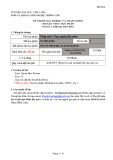
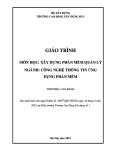
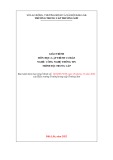
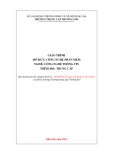


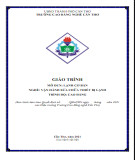








![Hệ thống quản lý cửa hàng bán thức ăn nhanh: Bài tập lớn [chuẩn nhất]](https://cdn.tailieu.vn/images/document/thumbnail/2025/20251112/nguyenhuan6724@gmail.com/135x160/54361762936114.jpg)
![Bộ câu hỏi trắc nghiệm Nhập môn Công nghệ phần mềm [mới nhất]](https://cdn.tailieu.vn/images/document/thumbnail/2025/20251111/nguyenhoangkhang07207@gmail.com/135x160/20831762916734.jpg)


